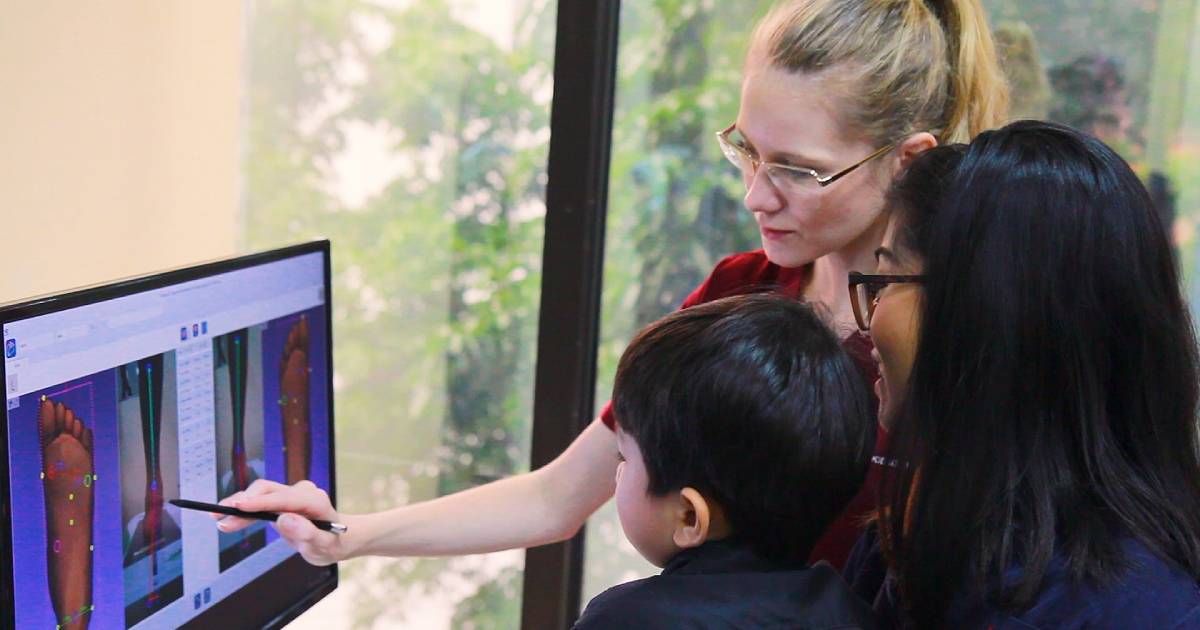What Is Out-toe Walking?
Out-toe walking is characterised by its waddle-like gait where the knees are bent with outward-pointing toes. Toddlers assume this gait pattern for stability and to maintain balance as they learn how to walk. This is considered normal until around the age of 2 but should reduce and develop into a more natural foot position over time as their gait pattern starts to mature.
If a child’s out-toeing persists past the age of 2, it is important to seek professional assistance promptly. Out-toeing beyond the toddler years without podiatric intervention can affect the proper development of a child’s hip, knee, and foot joints. This can lead to the persistence and worsening of the condition, making it difficult for the child to walk normally in the future.
Risk Factors For Out-toe Walking
While in-toeing can start from birth, out-toeing is much less common and often only occurs in toddlers after they have started walking. Cases of out-toeing that are caused by tightness can be resolved with muscle and tendon elongation, but certain underlying conditions can cause out-toeing to persist for a longer period or even permanently.
Out-toeing may be caused by conditions such as:
- Femoral Retroversion
- External Tibial Torsion
- Genu Varum (bow leg)
- Flat Foot
- Tarsal coalitions
- Toe walking
- Developmental delays
- Hypermobility
- Genetic disorders i.e., muscular dystrophy
How is Out-toe Walking Managed?
An initial assessment with a podiatrist can help identify the underlying causes of your child’s out-toeing. Based on the diagnosis, our podiatrists will design an appropriate strategy that could involve:
- Recommending specific footwear
- Customised foot orthotics
- Paediatric ankle foot orthotics
- Ankle foot orthotics (AFOs)
- Knee ankle foot orthotics (KAFO)
If you suspect that your child has issues with their hips, knees, legs, or feet, please highlight it to your podiatrist. Children’s feet are highly correctable and early intervention is key to resolving postural deformities, gait abnormalities, and misalignment during growth.
Frequently Asked Questions
Yes, it is important for children to be assessed and get intervention for their out-toeing at an early age. This is because the bones and joints in a child’s feet are mostly made up of cartilaginous structures, which harden and ossify in a more fixed position as the child develops. It is much harder to resolve the condition once the growth plates have closed and the bones and general structures have set into deviated positions. Therefore, it is usually advised to resolve the condition at an early age when their bones and joints are still malleable.
You may do so within reason. However, Out-toeing is more common in children with serious soft tissue conditions, such as hypermobility and down syndrome. It is not advisable to “wait and see” as this delays the window of opportunity for intervention. Out-toeing may then become more difficult and time-consuming to resolve at a later stage.
Out-toeing is usually associated with patients experiencing hip, knee or ankle pain. Over the years, this can potentially lead to longer term function problems such as early onset arthritis or posterior tibial tendinopathy (PTTD).
However, not all patients may experience these symptoms. Finding the underlying cause of out-toeing is vital for providing the right interventions.
For certain paediatric conditions, the lower limb needs to be restricted accordingly with a prescription device to ensure the development of limbs in the proper alignment. This prescription device will intentionally restrict the undesired movement while considering the mobility of associated joints.
Devices can be modified with different levels of flexibility and customised to your child’s specific needs.
Paediatric devices should not cause future gait problems if they are well made by a certified clinical specialist like a podiatrist. Proper and fully customised devices will help improve gait patterns and reduce the risk of future joint conditions such as bunions or out-toeing.
This depends on the cause of the out-toeing. Hip-derived conditions requires a combined therapy approach to achieve the best results which includes targeted exercises and devices. Exercises help relax and strengthen the hip structure while devices realign the lower limbs.
On the other hand, out-toeing that arises due to conditions such as metatarsus adductus and external tibial torsion cannot be resolved with simple exercises or massages. If your child is showing signs of out-toeing outside of the normal age range, it is best to seek a professional opinion.
Most paediatric orthotic devices are designed to be worn with footwear, but paediatric ankle foot orthotics can be worn on their own when indoors or on softer surfaces.
Results will vary based on several factors:
- Type of condition
- Severity of the condition
- Type of orthotic devices used
- Amount of time spent in the devices
- Activity level when wearing the devices
Most conditions can show improvement within 6 months of wearing devices, but in some cases it can take 4 to 18 months or more to relieve all signs of out-toeing.





